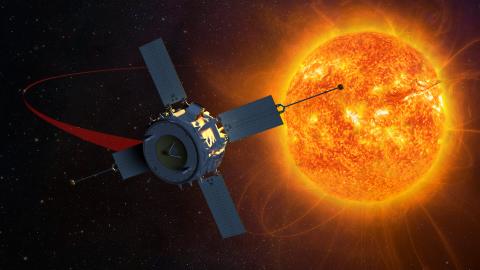About the Instrument
Instrument Type
Particle
The APL-built Advanced Composition Explorer (ACE) spacecraft is a NASA mission to study energetic charged particles that stream from the Sun, the interplanetary medium and the Milky Way galaxy. Critical to that objective is the APL-built and -operated Electron, Proton and Alpha Monitor (EPAM) experiment, a suite of five telescopes that measures the energy, intensity and direction of these particles upstream of Earth. These telescopes include spectrometers to measure electrons and ions as well as a telescope that can measure ion composition. Using the spacecraft’s spin to sweep up particles across the entire sky, the EPAM instrument also aids in the detection and analysis of solar flares and interplanetary coronal mass ejections from the Sun. And because it measures ions known to degrade sensitive systems on Earth-orbiting spacecraft, EPAM is also a critical source for the National Oceanic and Atmospheric Administration’s Space Weather Prediction Center. Since the launch of ACE, selected EPAM channels are downlinked and broadcasted as part of NOAA’s Real-Time Solar Wind system.





